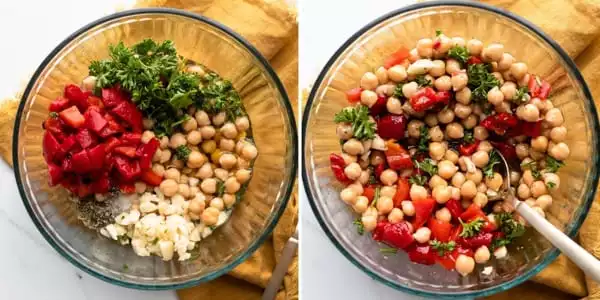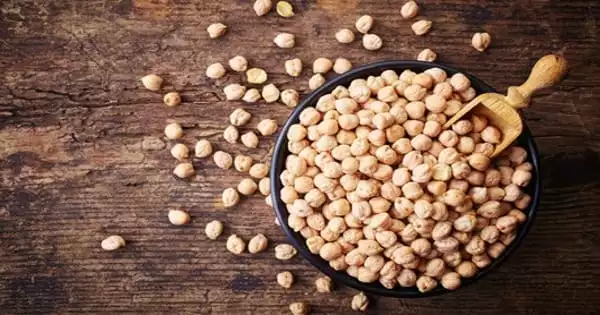Chickpeas are an excellent source of protein and a common ingredient in many Eastern and African dishes. Chickpeas, in fact, are becoming increasingly popular as a tasty source of fiber, potassium, B vitamins, iron, magnesium, and selenium.
Combating hunger and ensuring complete nutrition remains a challenge all over the world, particularly in developing countries. Efforts to address these challenges are ongoing, and it’s a big job that’s only getting bigger as the world’s population grows and the effects of climate change alter the agricultural landscape.
A massive international research effort has resulted in the creation of a genetic model for the “ultimate” chickpea, which has the potential to increase crop yields by up to 12%. The research consortium genetically mapped thousands of chickpea varieties, which the UQ team then used to identify the most valuable gene combinations via artificial intelligence (AI).
Professor Ben Hayes, together with Professor Kai Voss-Fels and Associate Professor Lee Hickey, led the UQ component of the project to develop a ‘haplotype’ genomic prediction crop breeding strategy for improved seed weight performance.
We identified 1,582 novel genes and established the chickpea pan-genome, which will serve as a foundation for breeding superior chickpea varieties with increased yield and resistance to drought, heat, and diseases.
Dr Rajeev Varshney
“Because most crop species only have a few varieties sequenced, the international team’s analysis of more than 3000 cultivated and wild varieties was a massive undertaking,” Professor Hayes explained.
Dr Rajeev Varshney of the International Crops Research Institute for the Semi-Arid Tropics in Hyderabad, India, led the groundbreaking international study. The study established chickpea’s origins in the Fertile Crescent and provides a comprehensive picture of genetic variation within chickpea.
“We identified 1,582 novel genes and established the chickpea pan-genome, which will serve as a foundation for breeding superior chickpea varieties with increased yield and resistance to drought, heat, and diseases,” Dr Varshney explained.
According to Professor Hayes, the data was used by the UQ team to model a chickpea with perfect genetics for seed weight, a trait linked to yield. “This additional data resulted in the yield increase predicted by our model, which is still being fine-tuned,” he explained. “We’re using our AI ‘FastStack’ technology platform to design a chickpea with the best genetics for maximum seed weight, and we believe this will be a valuable tool for chickpea breeders in the long run.”

FastStack combines artificial intelligence and genomic prediction technology to identify gene combinations that are most likely to improve crop performance. Chickpea is Australia’s second-largest pulse crop, after lupin, in terms of planting area and production. It is the world’s second-largest producer of pulses and ranks third in terms of area.
Associate Professor Lee Hickey, a UQ plant breeder and crop geneticist, stated that global demand for protein-rich pulses is increasing. “Improving chickpea productivity in Australia provides opportunities for our farmers to supply local food industries and export markets,” he explained.
“Using this AI-generated chickpea model for increased seed weight in the field will be difficult, given the number of generations required for optimal chickpea genetics, as well as the impact of different environments and management practices on crop growth. However, we have tools like speed breeding that can speed up this process and allow us to test and put these theoretical scenarios into practice.”
Dr. Hickey believes that new genomic breeding approaches, such as the haplotype model, will reshape chickpea breeding strategies for developing high-yielding and nutritious chickpea varieties.
Chickpea is an important rotation crop in farming systems because it is nitrogen self-fertile, reducing the need for nitrogen fertilizer. While chickpeas are popular in Mediterranean and Middle Eastern cuisines, they are also Australia’s second largest pulse crop after lupin. It is critical for Australia and farming in general because it self-fertilizes for nitrogen, making it less harmful to the environment. When you combine that with the nutritional benefits of chickpeas, it’s easy to see why chickpeas are worth the effort to improve.
You probably enjoy hummus and falafel – both of which are made with chickpeas. Not only that, but chickpeas are popular in Indian cuisine and can be found in a variety of salads, soups, stews, and other dishes. It’s fascinating that scientists can use AI to improve chickpeas, but AI will be a tool of the future in many fields, including farming.





